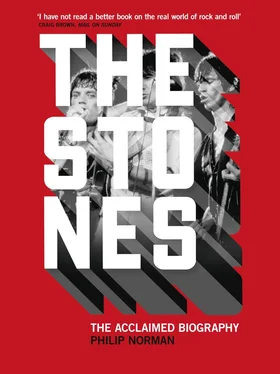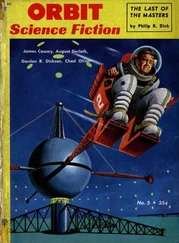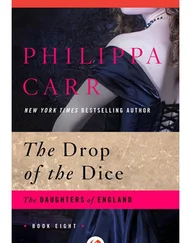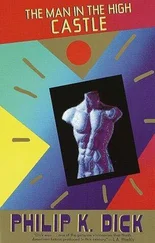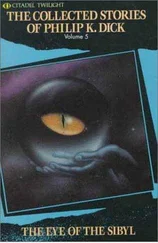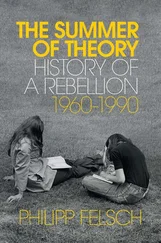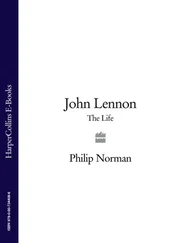Some sources had been tapped many times before, like Dick Taylor, Keith’s fellow student at Sidcup Art College, who was in the original Stones line-up, then went on to join an even hairier band, the Pretty Things. ‘I wondered what the spiel would be this time,’ he said after I’d explained at length how different and serious my book would be. Others came my way through the sheer luck every biographer needs. For example, there was Shirley Arnold, the Stones’ fan-club secretary and long-time assistant, who recalled a somewhat different Brian Jones from the amoral, devious, larcenous screw-up of legend. As also did Helen Spittal, a young fan who visited Brian a few days before he mysteriously drowned in his swimming-pool, leaving behind the fog of Kennedyesque conspiracy theory that lingers to this day.
Tracking down elusive interviewees sometimes became an obsession or, rather, a sickness from which one awoke cured the morning after finally reaching them. I spent months on the trail of Anita Pallenberg, by then separated from Keith. I got a phone-number for her that worked and persuaded her to see me in her suite at London’s Grosvenor House Hotel. But when I rang at the door, a croaky voice through the woodwork informed me she wasn’t well and I’d have to come back another time. Interviewing rock people hardens you to this feeling of so near, yet so far. Several more weeks passed before I was finally cured of Anita-itis. (For others, Keith included, it took longer.)
In the most bizarre instance of biographer’s luck, I also got to spend a Christmas Day at 3 Cheyne Walk, the Chelsea house Keith had abandoned when the Stones went into tax-exile in France a decade earlier. The wood-panelled eighteenth-century interior retained all its original rock ’n’ roll features, like the shrine to Jimi Hendrix in the first-floor drawing room and an en suite toilet with a bead curtain instead of a door. A few of Keith’s personal possessions were still scattered around the basement, including a right ski-boot and a block of three aircraft seats, torn from their mooring during some long-ago in-flight vandalism. The house’s temporary tenant, writer and painter Molly Parkin, was convinced the house was haunted. Might the restless spirits, I wondered, include a left ski-boot, seeking its lost brother, and a jumbo jet, seeking a lost segment of its first-class cabin?
Halfway through the project I relocated to New York, where I spent time with, among others, Allen Klein’s nephew Ron Schneider, who ran the Stones’ ‘renaissance’ American tour of 1969, and David Maysles, who filmed the free concert at Altamont, California, that was its bloody aftermath. I spent a further evening with Marianne, this time tête-à-tête, on nothing stronger than Stolichnaya vodka. And, in my greatest-ever stroke of biographer’s luck, I had an hour on the telephone with Mick’s first, most beautiful and most ill-used wife, Bianca.
I wrote the second half of the book in an artist’s loft in TriBeCa during New York’s hottest summer for decades. There was no air-conditioning, and roaches as big as fat, glossy dates galloped over the bare floorboards. The ‘loft’ (first floor actually) belonged to a sculptress who seemed to have only one subject: the naked human posterior. Sets of buttocks were everywhere, in stone or plaster, some mounted on the wall, some free-standing. In the centre of the main room, impossible to move, stood a tableau of two giant naked wrestlers, fashioned from khaki-coloured clay, balsawood and wire, and locked together in a pose showing off both their buttocks to the optimum.
I worked at a ratty silver card table, so close to the wrestlers that I could have used the anus of one as a pen-holder. I had no word processor – few writers then did – just a small portable typewriter and a pile of those peculiarly American yellow writing-pads. The cobbled street outside was a rat-run for heavy trucks en route to the Holland Tunnel; every few minutes, the building would shake as another consignment of McDonald’s or Tropicana orange juice thundered by.
For me, as for most authors, the final job in the writing of every book is polishing up its opening paragraphs. This I did in the old Long Island whaling town of Sag Harbor in midwinter, when the snow turned every street of wooden houses and picket fences into a Norman Rockwell nocturne. I worked in a bedroom decorated in nineteenth-century pioneer style, including a spiky four-poster, and ate each evening in a deserted bar whose owner greeted me with as much ceremony as if I were a party led by King Edward VII. It couldn’t have been a pleasanter contrast with buttocks and trucks in TriBeCa – or, for that matter, going on tour with the Stones.
The UK edition came out early in 1984 under the Elm Tree imprint. It reached number 6 in the Sunday Times bestsellers and was well reviewed, notably by Pete Townshend, then taking a sabbatical from The Who to work in publishing. Townshend opined that the Stones were ‘lucky’ to have me as a biographer, though I’m not sure they themselves ever felt that. In a television interview, Mick called me ‘a journalist on the make’, which I thought rich coming from him. My favourite comment was Vogue ’s, that the book would appeal to ‘anyone with a scrap of naughtiness in them’.
In America, where it was re-titled Symphony for the Devil (a mistake), the critical response was more muted. There, unfortunately, it came out at the same time as The True Adventures of the Rolling Stones by Stanley Booth, who had accompanied the band in a semi-official status on their ’69 US tour and taken the next fourteen years to write it up. Although Booth’s narrative focused mainly on his efforts to get Mick and Keith to sign his publisher’s contract, with long digressions on his personal drug-use, The True Adventures of the Rolling Stones was inevitably reviewed alongside my book: in a metaphor never more apt, it muddied the waters. Newsweek magazine gave me a rave review, dismissing Booth in the same piece. But the New York Times ’s Robert Palmer (not the Robert Palmer, by a very long way) declared that, spiritually speaking, the Stones were an American band, so their story could only be told properly by an American. Presumably, he meant one named R. Palmer.
In 1984, the accepted wisdom was that ‘not many people who like the Stones read books’. I’m glad this one proved the exception by staying in print continuously for 28 years – and still being around to mark their half-century.
PART ONE
ONE
‘I WAS SCHOOLED WITH A STRAP RIGHT ACROSS MY BACK’
When the black man was alone and destitute, he played the blues. With a roof over his head, however leaky, he played rhythm and blues. The difference is as great as between the country and the city; between Southern cotton fields and Eastern ghettoes; between fatalistic old age and vigorous, upwardly mobile youth. It is the difference between a guitar powered only by its own mournful echo, and a guitar belligerently amplified, played with aggressive slides and swoops along the fretboard by a switchblade knife or broken bottle neck. It is the difference between bleak, dusty, desperate noontide and pulsating, pleasure-seeking night.
While the blues stretch back into vague infinities of work gangs and prison cells, rhythm and blues can be given an approximate time and place of genesis. It grew up first during and just after the Second World War, amid the mass redistribution of American blacks into their country’s war machine. Its sound was of newly explored streets and unfamiliar alleys; of cheap neon, soda-fountain sugar and wafting gasoline; of the old, sleepy twelve-bar blues reacting in astonishment, delight – and sometimes fury – to all the varied stimuli of big-city life.
Читать дальше
